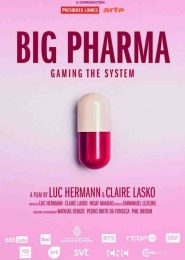Soylent: How I Stopped Eating for 30 Days (2013)
In 2013, a daring experiment unfolded—one that challenged the very essence of our relationship with food. The protagonist? Rob Rhinehart, a 25-year-old software engineering graduate and aspiring entrepreneur. His mission? To live on a concoction called Soylent for an entire month, forsaking traditional meals. The result? A fascinating journey into the Silicon Valley-driven future of sustenance.
Soylent, a sci-fi-inspired nutrient shake, emerged from Rob’s pragmatic need. As a hyperactive bachelor, he grappled with financial constraints and time scarcity. Instead of resorting to plastic-wrapped ramen like most broke students, Rob embarked on a radical path. He dissected government food standards and nutrition textbooks, piecing together a basic formula that could sustain human life. His yellow-grey potion contained the essential calories and nutrients required for survival.
The experiment began. Rob documented his experience, subjecting himself to lab tests and sharing the results online. His concluding post, titled How I Stopped Eating Food, became an internet sensation. The world watched as Rob sailed through the first few days, nerves tingling, pushing off from the shore of conventional eating. His body subsisted solely on this chemical mixture—an assembly of rudimentary knowledge. And remarkably, he felt great.
But Rob’s journey wasn’t solitary. It sparked a wildfire of interest. Consumers and media alike clamored for the recipe, eager to embrace a post-food existence. Soylent’s allure lay in its promise: nobody had to eat food ever again. The implications were profound. With the world’s population surging and millions going hungry annually, the demand for cheap, nutritious sustenance intensified. Silicon Valley buzzed with alternative food visions—from in vitro meat to genetically modified crops.
Rob Rhinehart’s liquid invention, consumed for 30 days straight, catapulted him to internet fame and fortune. His audacious experiment challenged norms, inviting us to question the very essence of our meals. Could a beige shake replace the sensory symphony of flavors, textures, and communal dining? Perhaps not entirely, but it nudged us toward a future where efficiency and nutrition converge—a future where Soylent might just be the new normal.
As we peer into the horizon, we wonder: Is Soylent the future of food? Rob’s journey suggests that the answer lies somewhere between the pragmatic and the poetic—a blend of science and sensation, a sip of the unknown.




